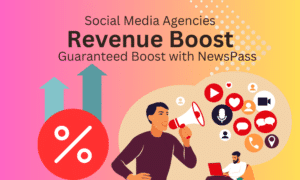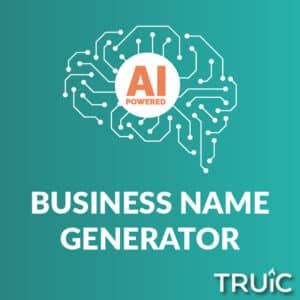For agencies, the pressure to deliver client results is relentless. In the current digital landscape, that means producing a consistent stream of high-quality, impactful content that not only fills a client’s website but also gets noticed by the media and search engines. But with clients spanning diverse industries, and a never-ending need for fresh, newsworthy material, many agencies find themselves stretched thin. The answer isn’t always to hire a massive in-house team.
The smartest agencies are leveraging outsourced content creation for agencies to produce client content that not only meets expectations but truly gets noticed and distributed, building brand authority and driving tangible outcomes. It’s about working smarter, not harder, to create content that captivates and persuades.
Why White-Label Content is the New Agency Gold
The demand for content is at an all-time high, but the time and resources required to create it from scratch for every client are often prohibitive. A recent Sitetrail study of 1,300 Agency Creatives revealed a clear strategic insight: a significant 72% said white-label PR content saved time, while 28% preferred building in-house teams. This data points to a fundamental truth in modern agency operations: time is a valuable commodity. By using a white-label model, agencies can save time, scale their service offerings, and ensure a consistent standard of quality across all their client accounts. It’s a strategic move that enables agencies to grow without a proportional increase in operational overhead. As a survey from Verblio showed, 75% of marketing agencies are outsourcing at least some of their content needs to help with the speed and volume of work, and many are finding that this is a more cost-effective solution than hiring a full-time writer.
The Operational Challenge of Traditional Content Creation
The traditional model of content creation for agencies is a constant scramble. It involves managing a network of freelancers, dealing with inconsistent quality, and a time-consuming back-and-forth on revisions. The operational overhead is immense, and the risk of not delivering for a client can be a major hit to your reputation. This is where the old model fails modern agencies that are built on efficiency and scale. It’s an outdated approach that is leaving money and client satisfaction on the table. A recent CMI study of B2C marketers found that 44% struggle to measure results consistently, and 40% find it hard to differentiate their products from competitors, highlighting the need for a more strategic approach to content.
The Solution: A White Label Content Partner
The modern solution to this challenge is a strategic partnership with a white label content provider. This model allows your agency to offer a full-scale content creation service under your own brand name, while the partner handles all the heavy lifting in the background. Your team acts as the client-facing liaison, managing the relationship and strategy, while the partner’s team of experts does the hard work of crafting high-quality, newsworthy content that gets noticed and distributed. It’s a seamless process that allows you to instantly offer a new, high-margin service to your clients without any of the operational headaches or risks. This is a fundamental shift from a service-based model, where you sell hours, to a results-based model, where you sell outcomes. According to a report from The New York Times Licensing Group, outsourcing content development can provide a new perspective and allow for quicker content publishing, which is especially important for timely industry news and trends.
How to Create Newsworthy Content That Gets Noticed
A great piece of content doesn’t just inform; it captivates and persuades. For agencies, this means moving beyond a simple blog post and creating a newsworthy story that can be pitched to the media. This is the essence of a strategic white label content partner. They can help you turn a client’s data into a compelling report, a new product into a human-interest story, or a company milestone into a shareable narrative. This kind of content not only serves your clients’ owned channels (their website and social media) but also provides the fuel for a powerful PR and backlink campaign. It’s about moving from a content provider to a brand builder.
Unique Editorial or Blog Mentions vs. Duplicate Newswires: What Really Works
| Factor | Duplicate Newswires (“By Wire”) | Newspass Method: Unique Articles with Brand Mentions & Anchor Texts |
|---|---|---|
| Search Engine Perception | Google and Bing classify syndicated wire copies as duplicate content, often suppressing them from rankings. | Unique articles are indexed as fresh content, giving search engines more reasons to show them. |
| AI Training Signals (GEO) | AI models down-rank near-identical text across multiple sites as noise. Wire duplication rarely strengthens a brand’s signal. | Each unique article reinforces a distinct data point. More diversity in language, anchor text, and context improves chances of being cited in AI responses. |
| Anchor Text Value | Duplicated links across identical articles provide little incremental SEO value. | Varied anchor texts across unique articles build a natural link profile that boosts brand authority in SERPs. |
| Snippet & Knowledge Graph Visibility | Duplicated wires rarely appear in snippets—Google prefers to surface the original or most authoritative version. | Multiple unique articles increase odds of snippet capture, knowledge panel reinforcement, and AI-generated answer inclusion. |
| Trust & Authority Signals | Search engines and AI see duplicates as a distribution tactic, not proof of relevance or trust. | Distinct editorial coverage is interpreted as independent corroboration—a powerful signal for both SEO and GEO. |
| Long-Term Impact | Short-lived “blast” effect, with diminishing returns as duplicates are filtered out. | Compounding long-term effect: every unique mention strengthens brand reputation and AI recall. |
Key Takeaway:
Duplicate wire distribution floods the web with copies that AI and search engines discount. Unique, well-placed articles with varied brand mentions and anchor texts build a stronger foundation for Generative Engine Optimization, snippet capture, and sustainable SEO authority.
A Case Study in Seamless Integration
Consider the anonymous case of “Impact Marketing,” a mid-sized digital marketing agency specializing in content and SEO. They had a great client base but were struggling to find a way to increase their average client value and stand out in new business pitches. The leadership team decided to integrate a new, high-impact content service. They partnered with a silent outsourced content creation for agencies provider. They began offering a “Content to Authority” package to their clients, which included a monthly newsworthy piece of content and guaranteed media placements.
The results were transformative. The white label partner handled all the content creation and distribution, with Impact Marketing’s team acting as the client-facing liaison. Within six months, they had signed on three new clients with the new service, generating over six figures in new, high-margin annual recurring revenue. The best part? Their clients were thrilled, and their SEO results were better than ever, thanks to the high-quality, newsworthy content they were producing. This partnership allowed Impact Marketing to provide a clear, demonstrable ROI to their clients and solidify their reputation as a results-driven agency.
The Financial Upside: High Margins, Uncapped Revenue
The financial model of partnering with a white label content provider is incredibly attractive for agencies. You can set your own pricing, marking up the service to reflect the immense value it provides to your clients. Since you don’t have the overhead of salaries, benefits, and media database subscriptions, your margins are exceptionally high. This model also significantly lowers your risk. You only pay for the service when you have a client who needs it, and with guaranteed placements, you’re never paying for a service that doesn’t deliver a tangible outcome. It’s an uncapped revenue opportunity with a low-risk profile. As one industry report highlighted, the average net profit margin for a marketing agency is between 6% and 12%, making high-margin services like this crucial for financial health and scalability.
Your Next Step to Building a High-Margin Agency
Are you ready to stop leaving money on the table and start offering a high-margin, high-impact service to your clients? It’s time to explore how a white label content service can transform your agency, without any of the operational headaches. By leveraging a silent fulfillment partner, you can instantly add a new revenue stream and build a reputation as a full-suite provider that gets results.
To learn more about how we can be your silent PR fulfillment partner, visit Sitetrail’s Newspass.








